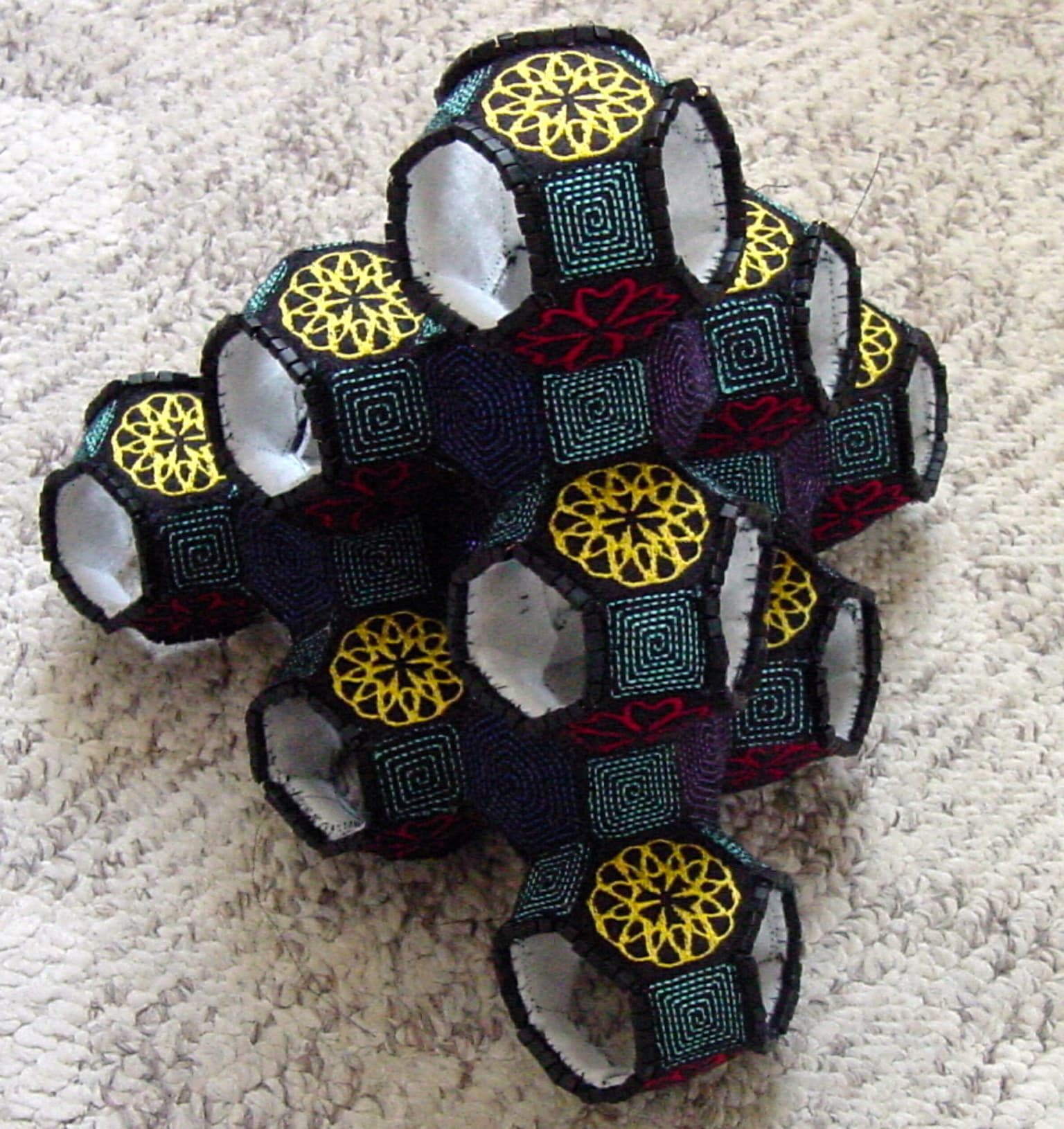S. Louise Gould
Artists
S. Louise Gould
Professor Emerita
Department of Mathematical Sciences, Central Connecticut State University
Connecticut USA
Statement
My mathematical art grows out of my experiences with my students and my explorations of mathematics, textiles, paper, and technology. I enjoy working with computer controlled machines such as the computerized embroidery sewing machine and the Craft Robo (plotter cutter) as well as traditional looms and knitting machines.
Artworks

Window into Infinity: A Sample of the Murhombicuboctahedron
6 1/2" x 6 1/2" x 6 1/2"
Embroidery on Cotton Fabric
2012
This is an extension of the work I have done with fabric polyhedra. "The Symmetries of Things" written by Conway, Burgiel and Goodman-Strauss has provided many pathways to explore and it was the inspiration for this piece. This Archimedean infinite polyhedra is constructed of regular hexagons and squares. It illustrates the symmetry *642. Each vertex has 4 squares and one hexagon surrounding it. This model uses squares of four colors to show how the model moves into space. Each of the modules is constructed from a "net" of embroidered squares and hexagons. The nets were designed on Geometer's Sketchpad then digitized using 4-D Professional Software and stitched on a Viking Topaz embroidery sewing machine. The pictures show the object from three different directions.

Mucuboctahedron
8.5 x 10 x 10 inches
Embroidery on wool/rayon felt with wire threaded beads
2013
This is the second in a series modeling infinite Archimedean polyhedra in embroidery and fabric. According to Conway, Burgiel and Goodman-Strauss in the Symmetries of Things, no one has yet enumerated the hundreds of Archimedean polyhedra in 3-space. Conway et al have however provided several for our exploration. This multiplied cuboctahedron dubbed “mucubocatahedron”with vertex configuration 6.4.6.4 illustrates many kinds of structure. This model draws attention to its tetrahedral symmetry, but it can also be trimmed to demonstrate both cubic and octahedral structures. The model is constructed from two congruent sets of chambers, each type with four hexagonal openings, but with inverted orientation. A journey down a corridor into a truncated octahedron chamber takes you from one truncated octahedron to another, colored or not depending upon which side of the surface your journey begins.